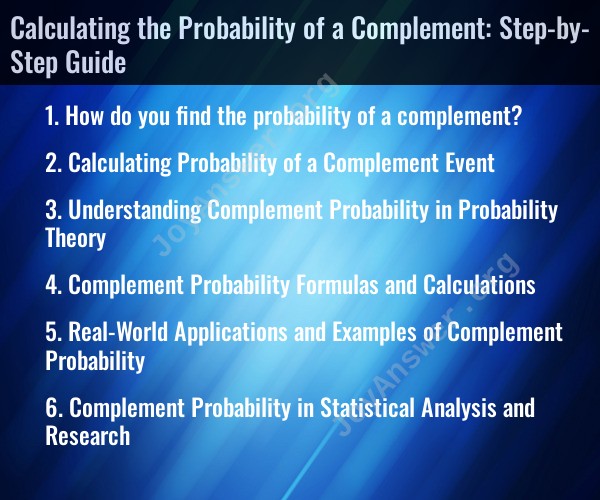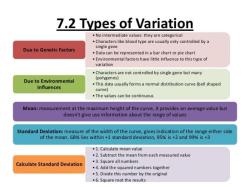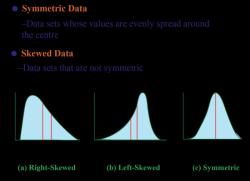How do you find the probability of a complement?
Calculating the probability of a complement involves finding the likelihood of an event not happening. The complement of an event A is denoted as A', and the probability of the complement is written as P(A'). Here's a step-by-step guide to finding the probability of a complement:
Identify the Event of Interest (A):
- Determine the specific event for which you want to find the complement. For example, let's say you're interested in the probability of rolling a 6 on a fair six-sided die.
Understand the Sample Space (S):
- The sample space (S) is the set of all possible outcomes. In the case of rolling a fair six-sided die, the sample space consists of the numbers 1 through 6 (S = {1, 2, 3, 4, 5, 6}).
Define the Complement (A'):
- The complement (A') of an event A consists of all outcomes in the sample space that are not part of event A. In our example, the complement (A') would be the probability of not rolling a 6, which includes the outcomes 1, 2, 3, 4, and 5.
Determine the Probability of Event A:
- Find the probability of the event A. In our example, the probability of rolling a 6 on a fair six-sided die is 1/6, as there is one favorable outcome (rolling a 6) out of six possible outcomes.
Calculate the Probability of the Complement (P(A')):
To find the probability of the complement, subtract the probability of event A from 1 (the total probability of all possible outcomes):
P(A') = 1 - P(A)
Using our example:
P(A') = 1 - (1/6)P(A') = 5/6
Express the Probability as a Fraction or Decimal:
- The probability of the complement (P(A')) can be expressed as a fraction or a decimal. In our example, P(A') is 5/6 or approximately 0.8333 when expressed as a decimal.
So, in the case of rolling a fair six-sided die, the probability of not rolling a 6 (the complement) is 5/6, which means you have a 5/6 chance of getting any number other than 6 when you roll the die.
Calculating Probability of a Complement Event
The probability of the complement of an event A is the probability that event A does not occur. It is denoted by P(A^c) or P(not A). The complement of an event A is the set of all outcomes that are not in event A.
To calculate the probability of the complement of an event A, you can use the following formula:
P(A^c) = 1 - P(A)
This formula states that the probability of the complement of an event is equal to 1 minus the probability of the event itself.
Understanding Complement Probability in Probability Theory
Complement probability is an important concept in probability theory. It is used in a variety of applications, including:
- Calculating the probability of an event: If you know the probability of the complement of an event, you can use the complement rule to calculate the probability of the event itself.
- Simplifying probability expressions: Complement probability can be used to simplify probability expressions and make them easier to calculate.
- Solving probability problems: Complement probability can be used to solve a variety of probability problems, such as finding the probability of a certain outcome occurring or not occurring.
Complement Probability Formulas and Calculations
Here are some examples of how to calculate the probability of a complement event:
- Example 1:
Suppose you flip a coin twice. The probability of getting heads on both flips is P(HH) = 1/4. The probability of not getting heads on both flips is the complement of P(HH), which is P(not HH) = 1 - 1/4 = 3/4.
- Example 2:
Suppose you draw a card from a deck of 52 cards. The probability of drawing a heart is P(heart) = 13/52. The probability of not drawing a heart is the complement of P(heart), which is P(not heart) = 1 - 13/52 = 39/52.
Real-World Applications and Examples of Complement Probability
Here are some examples of real-world applications of complement probability:
- Quality control: Complement probability can be used in quality control to calculate the probability of a product being defective.
- Risk assessment: Complement probability can be used in risk assessment to calculate the probability of a negative event occurring.
- Medical diagnosis: Complement probability can be used in medical diagnosis to calculate the probability of a patient having a disease.
- Insurance: Complement probability can be used in insurance to calculate the probability of a claim being filed.
Complement Probability in Statistical Analysis and Research
Complement probability is also used in statistical analysis and research. For example, it can be used to:
- Calculate confidence intervals: Confidence intervals are used to estimate the range of values within which a population parameter is likely to fall. Complement probability can be used to calculate the confidence interval for a population proportion.
- Perform hypothesis tests: Hypothesis tests are used to test the validity of a statistical hypothesis. Complement probability can be used to calculate the p-value of a hypothesis test.
- Design experiments: Experimenters can use complement probability to design experiments that are more efficient and informative.
Overall, complement probability is a versatile and important concept in probability theory and statistics. It has a wide range of applications in the real world.












